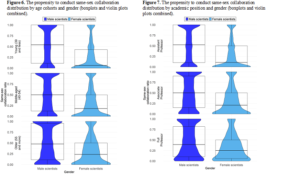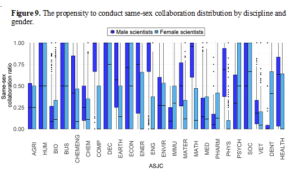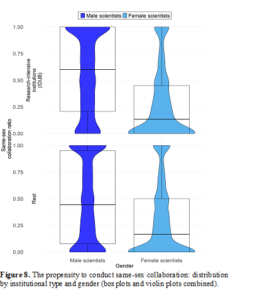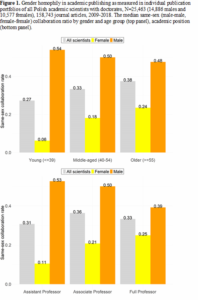Marek Kwiek and Wojciech Roszka published an article in “Journal of Informetrics” (Scopus 97 percentile, WoS IF 4.611):
Gender-based homophily in research: A large-scale study of man-woman collaboration: Journal of Informetrics, 15(3) August 2021, article 101171, pp. 1-26. https://doi.org/10.1016/j.joi.2021.101171
Link to the article (Gold Open Access) is here.
PDF is here.
Highlights
- • “Individual publication portfolios” for all internationally visible scientists.
- • Most male scientists collaborate solely with males.
- • Most female scientists, in contrast, do not collaborate with females at all.
- • All-female authorship marginal, all-male authorship pervasive, in all age groups.
- • Articles written in mixed-sex collaboration published in more prestigious journals.
Abstract
We examined the male-female collaboration practices of all internationally visible Polish university professors (N = 25,463) based on their Scopus-indexed publications from 2009–2018 (158,743 journal articles). We merged a national registry of 99,935 scientists (with full administrative and biographical data) with the Scopus publication database, using probabilistic and deterministic record linkage. Our unique biographical, administrative, publication, and citation database (“The Polish Science Observatory”) included all professors with at least a doctoral degree employed in 85 research-involved universities. We determined what we term an “individual publication portfolio” for every professor, and we examined the respective impacts of biological age, academic position, academic discipline, average journal prestige, and type of institution on the same-sex collaboration ratio. The gender homophily principle (publishing predominantly with scientists of the same sex) was found to apply to male scientists—but not to females. The majority of male scientists collaborate solely with males; most female scientists, in contrast, do not collaborate with females at all. Across all age groups studied, all-female collaboration is marginal, while all-male collaboration is pervasive. Gender homophily in research-intensive institutions proved stronger for males than for females. Finally, we used a multi-dimensional fractional logit regression model to estimate the impact of gender and other individual-level and institutional-level independent variables on gender homophily in research collaboration.
Keywords








